NASA movie posters
For a number of their recent missions, NASA has designed movie-like posters. This one was pretty clearly influenced by Star Trek:
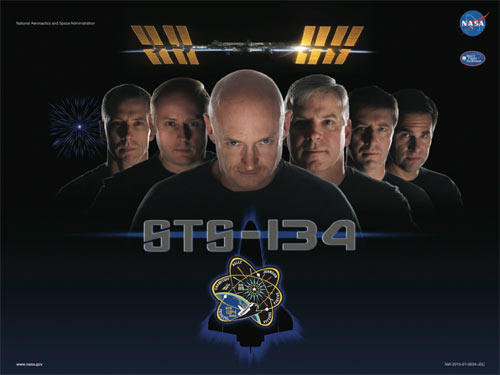



This site is made possible by member support. 💞
Big thanks to Arcustech for hosting the site and offering amazing tech support.
When you buy through links on kottke.org, I may earn an affiliate commission. Thanks for supporting the site!
kottke.org. home of fine hypertext products since 1998.
For a number of their recent missions, NASA has designed movie-like posters. This one was pretty clearly influenced by Star Trek:

Born in the 1950s, raised on comic book dreams of exploring deep space in a rocket ship, NASA showed a lot of promise as youngster. As NASA grew up, everyone told it to be realistic, focus on practical things closer to home: Velcro, Tang, pens that work upside down. Sure, it was taking care of its responsibilities, but its dreams faded away. Where did the last three decades go?
That’s from Modcult.
Update: See also Ron Planet. (thx, craig)
Speaking of the Moon, the LRO snapped a new picture of Apollo 11 landing site from its orbital perch 50km above the surface.
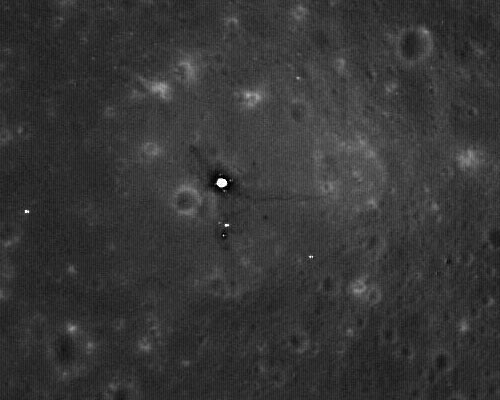
NASA announced that it has found pretty hard evidence of significant amounts of water on the Moon.
“We are ecstatic,” said Anthony Colaprete, LCROSS project scientist and principal investigator at NASA’s Ames Research Center in Moffett Field, Calif. “Multiple lines of evidence show water was present in both the high angle vapor plume and the ejecta curtain created by the LCROSS Centaur impact. The concentration and distribution of water and other substances requires further analysis, but it is safe to say Cabeus holds water.”
I don’t have to tell you about the implications here. Just think of how much you could sell authentic Moon bottled water for.
I said yesterday that NASA would be taking some new photos of the Apollo landing sites with the Lunar Reconnaissance Orbiter. Turns out that happened pretty quickly…they just released photos of the Apollo 11, 14, 15, 16, and 17 sites. Here’s the Apollo 11 site:
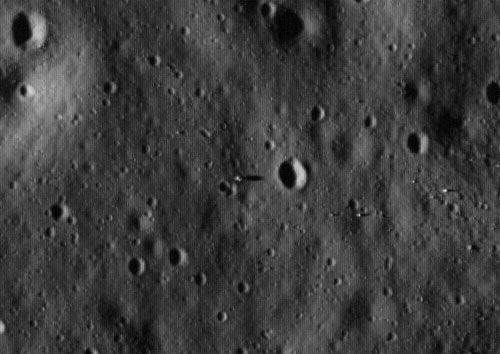
The lunar module is the small white bit in the middle casting the long shadow. The Apollo 14 site is the coolest…you can see the path the astronauts took out to some scientific instruments. The LRO hasn’t reached its final orbit yet so future images “will have two to three times greater resolution”. !!! See also my giant Apollo 11 post.
Yesterday was the 40th anniversary of the launch of Apollo 11 and Monday is the same for both the first Moon landing and the first walk on the surface. In this entry, I’ve collected some of the best resources on the web related to the anniversary…articles, historical documents, audio, video, transcripts, photos, and the like. Enjoy.
We Choose the Moon is tracking the activities of the Apollo 11 mission as it happened 40 years ago. Very nicely done.
Housed on NASA’s history site is a ton of resources about the Apollo 11 landing, including an annotated transript of the landing, which makes for really interesting reading. MP3 files are also available as are many, many video clips of the landing at the astronauts’ time on the surface. Highlights: this video was shot out of the window of the lunar module from a height of 50,000 feet until one minute after touchdown and I’ve never seen Armstrong’s first step on the Moon from this angle before.
For its July 21, 1969 issue, The NY Times used 96 pt. type to declare that MEN WALK ON MOON.
The landing was made four miles west of the aiming point, but well within the designated area. An apparent error in some data fed into the craft’s guidance computer from the earth was said to have accounted for the discrepancy.
Suddenly the astronauts were startled to see that the computer was guiding them toward a possibly disastrous touchdown in a boulder-filled crater about the size of a football field.
Mr. Armstrong grabbed manual control of the vehicle and guided it safely over the crater to a smoother spot, the rocket engine stirring a cloud of moon dust during the final seconds of descent.

The Onion used larger type and took a more unadulterated and profane approach (love the video version).
John Noble Wilford, the Times journalist who wrote the front page story underneath the 96 pt. type — “the biggest single story of my career” — recounts his Apollo 11 experience and ponders the Apollo program’s legacy in a great piece for the Times.
It then occurs to me that if Columbus and Capt. James Cook were alive, they might be less astonished by two men landing on the Moon than by the millions of people, worldwide, watching every step of the walk as it happens. Exploring is old, but instantaneous telecommunications is new and marvelous.
In just 1.3 seconds, the time it takes for radio waves to travel the 238,000 miles from Moon to Earth, each step by Armstrong and Aldrin is seen, and their voices heard, throughout the world they have for the time being left behind. In contrast to exploration’s previous landfalls, the whole world shares in this moment.
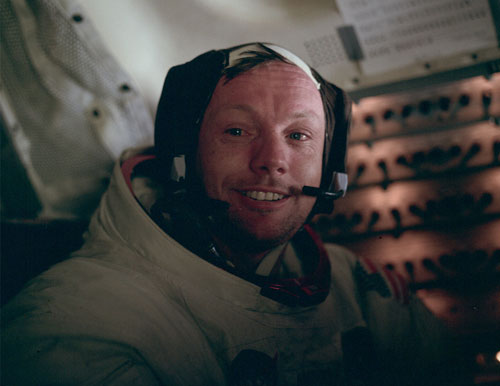
The Apollo 11 mission in photographs: NASA Images is the comprehensive source for NASA photos of the Apollo 11 mission; the always excellent Big Picture has photos of the mission from a variety of sources; David Burnett shot photos of people watching the launch; Time looks at Apollo astronauts Now and Then; the NY Times collected photos from readers of their Apollo 11 moments; Life has several photo galleries: Buzz Aldrin Looks Back, Scenes From the Moon, Up Close With Apollo 11 (rare and never-published photos), and The World Watches; and Google’s archive of Life magazine’s Apollo 11 images.
A map of where Armstrong and Aldrin walked during their 2+ hours on the surface. That same map superimposed on a soccer pitch and on a baseball field. They didn’t walk that far at all.

Explore the Apollo 11 landing site on Google Moon.
In piece published on the 40th anniversary of the Apollo 11 launch, Buzz Aldrin advocates not a return to the Moon but a mission to Mars with the objective of establishing a colony on the red planet.
Let the lunar surface be the ultimate global commons while we focus on more distant and sustainable goals to revitalize our space program. Our next generation must think boldly in terms of a goal for the space program: Mars for America’s future. I am not suggesting a few visits to plant flags and do photo ops but a journey to make the first homestead in space: an American colony on a new world.
Robotic exploration of Mars has yielded tantalizing clues about what was once a water-soaked planet. Deep beneath the soils of Mars may lie trapped frozen water, possibly with traces of still-extant primitive life forms. Climate change on a vast scale has reshaped Mars. With Earth in the throes of its own climate evolution, human outposts on Mars could be a virtual laboratory to study these vast planetary changes. And the best way to study Mars is with the two hands, eyes and ears of a geologist, first at a moon orbiting Mars and then on the Red Planet’s surface.
Video of John F. Kennedy’s “we choose to go to the Moon” speech given at Rice University on September 12, 1962. Fewer than 7 years later, Apollo 11 achieved the goal that Kennedy laid out in that speech.
In a piece for New Scientist, Linda Geddes writes about possible future lunar parks and how they might be preserved.
Around these [landing sites] are scattered smaller artefacts and personal items, such as Neil Armstrong’s boots and portable life-support system, scientific instruments and their power generators — and, of course, the iconic US flag which remains planted in the moon’s surface. Then there are the footprints and rover tread paths. Despite the passing of the years, these remain carved into the dust because the moon has no wind or rain to wash them away.
Anthropologist P. J. Capelotti of Penn State University in Abington has mapped out five “lunar parks”. These cover the areas where the majority of the artefacts are concentrated and could be used as a basis for future preservation efforts. “Nobody’s saying that the whole moon has to be off limits, but as people are starting to make plans for tourism and mineral extraction, or for putting a base there, they just need to be aware of them and work around them.”
Since returning from the Moon, Neil Armstrong has been less and less willing to speak in public about his Apollo 11 experience. For the 40th anniversary, Armstrong will not take part in the NASA event to commemorate the landing. His only appearance related to the anniversary will be a 15-minute lecture at a Smithsonian Institution event on Sunday night. I found this event on the National Air and Space Museum site…maybe that’s it? If so, then Armstrong’s lecture will be webcast live on the NASA TV site that evening.
Popular Science shares a list of ten things you didn’t know about the Apollo 11 Moon landing.
7. When Buzz Aldrin joined Armstrong on the surface, he had to make sure not to lock the Eagle’s door because there was no outer handle.
Moonwalk One is a documentary film about Apollo released in 1970 to little fanfare, even though it won an award at the Cannes Film Festival. The film was commissioned by NASA but with so much Apollo activity and information happening in the late 60s and early 70s, no one was interested in distributing or seeing the film and it was soon forgotten. Recently, the only remaining 35mm print of the film was located under the director’s desk, restored, and offered for sale on DVD in time for the 40th anniversary.
To get a feel of what it was like in the Soviet Union during the Apollo 11 mission, Scientific American interviewed Sergei Khrushchev, son of former Russian premier Nikita Khrushchev. The reaction was somewhat more subdued than in other parts of the world.
Of course, you cannot have people land on the moon and just say nothing. It was published in all the newspapers. But if you remember [back then] when Americans spoke of the first man in space, they were always talking of “the first American in space” [not Yuri Gagarin]. The same feeling was prevalent in Russia. There were small articles when Apollo 11 was launched. Actually, there was a small article on the first page of Pravda and then three columns on page five. I looked it up again.
Eat Me Daily explores the food consumed on the mission.
The Apollo crew even dined on thermo-stabilized cheddar cheese spread and hot dogs during the moon mission, bringing at least a bit of America in July to the sterile flight craft. And yes, there was bacon - foreshadowing the current bacon craze, the first meal eaten by man on the moon was none other than bacon cubes, coated with gelatin to combat crumbs.
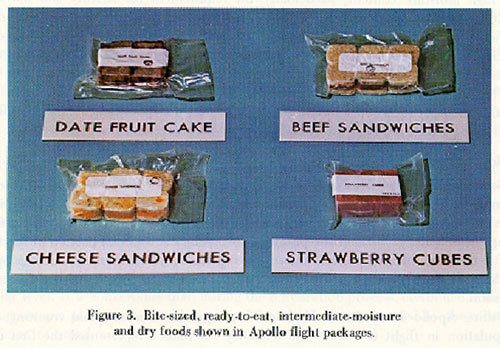
The issue of the New Yorker published just after the Moon landing is worth a look: much of the Talk of the Town section is devoted to the landing and there’s also a Letter from the Space Center. (Subscribers only.)
The main NASA site has an interactive feature to explore the landing site and Eagle (Eagle was the name of the lunar module).
Finally, there’s still some good stuff to be had on the old telly on Monday. The History Channel has As It Happened: Man on the Moon at 8pm ET:
This special takes viewers back to July 1969 to experience the actual CBS News/Walter Cronkite coverage of man’s first lunar landing. Using minimal editing and leaving the original footage untouched viewers will feel as if they are watching the CBS coverage in July of 1969. While today we know the outcome of Apollo 11’s mission it was not a given then. This will become evident watching Walter Cronkite and his colleagues as they watch the historic lunar mission unfold before them.
and Moonshot, a two-hour documentary about Apollo 11, at 9pm ET. Turner Classic Movies is airing a bunch of Moon-related movies all day, including A Trip to the Moon (a 12-minute film from 1902) at 8pm ET and the excellent For All Mankind (newly out on Criterion Blu-ray) at 8:15pm ET. The Discovery Channel has When We Left the Earth, a one-hour documentary on the mission, at 10pm ET. If none of that tickles your fancy, try episode 6 of the excellent From the Earth to the Moon (available for the insanely low price of $12 on Amazon) or In the Shadow of the Moon on DVD.
[If you enjoyed this post, you should post it to Twitter.]
Update: Tom Wolfe, author of The Right Stuff, writes that landing on the Moon killed NASA.
Everybody, including Congress, was caught up in the adrenal rush of it all. But then, on the morning after, congressmen began to wonder about something that hadn’t dawned on them since Kennedy’s oration. What was this single combat stuff — they didn’t use the actual term — really all about? It had been a battle for morale at home and image abroad. Fine, O.K., we won, but it had no tactical military meaning whatsoever. And it had cost a fortune, $150 billion or so. And this business of sending a man to Mars and whatnot? Just more of the same, when you got right down to it. How laudable … how far-seeing … but why don’t we just do a Scarlett O’Hara and think about it tomorrow?
July Moon is a forthcoming documentary about some lost NASA tapes. Surely not these NASA tapes?
The computer source code that ran Apollo 11’s Command Module and Lunar Module has been released.
A recently discovered photo clearly shows Neil Armstrong’s face on the Moon through his visor.
He was the first man to walk on the moon, taking that one giant leap for mankind — yet most of the famous shots are of his fellow astronaut Buzz Aldrin, as it was Armstrong who manned the stills camera.
New Scientist overlaid the Apollo lunar excursion maps on top of cities in Google Earth. Neil and Buzz didn’t even leave Trafalgar Square on their trip to the Moon.
Hmm, I was just wondering about this the other day: NASA’s Lunar Reconnaissance Orbiter is going to take photos of some of the Apollo landing sites, including where Apollo 11 landed.
Lunar archaeologists, interested in making the Apollo 11 site a National Historic Landmark, hope the planned photos will answer some of these longstanding questions: What is the condition of Tranquility Base after 40 years? Was the American flag blown over on the Eagle’s ascent and is it now a bleached skeleton? What are the relatively long term effects of the lunar environment on human artifacts?
This should quiet the people who still think it was all a hoax…although NASA could be faking these photos as well.
NASA is restoring and improving the video footage of the Apollo 11 mission and this morning they released some of those videos, including Neil Armstrong’s first step on the Moon, Aldrin’s first step, and the raising of the American flag.
Update: The tapes containing the original footage were erased to record satellite data. The restorations are being sourced from broadcast TV footage.
Live on NASA TV right now: the launch of the Space Shuttle Atlantis, tasked to repair the Hubble telescope. Looks like if the weather holds, lift-off is around 2:01pm. (via @noahkalina)
The Book Cover Archive Blog gets the skinny on using NASA images in creative work.
All of the media produced by NASA is public domain, meaning that anyone can use it any way (as long as they obey restrictions of publicity and privacy).
They also point to NASA Images, which is operated by Internet Archive and contains a copy of almost every image that NASA has ever produced. Just for the heck of it, here’s the first photo of the Moon taken by a US spacecraft.
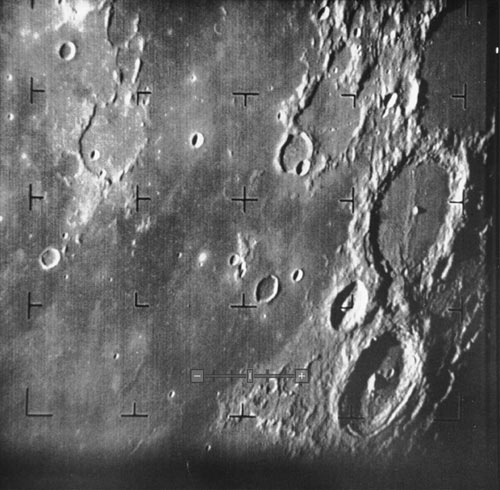
Those plucky Mars rovers are still going. Their planned roving time was three months but now more than four years in, NASA is sending Opportunity off on a two-year trek to visit a large crater.
The mission team estimates Opportunity may be able to travel about 100m per day. But even at that pace, the journey could take two years. The rover will stop to study rocks on the way, and in winter months it cannot move because there is not enough sunlight to provide sufficient power for driving.
Water on Mars: confirmed.
Laboratory tests aboard NASA’s Phoenix Mars Lander have identified water in a soil sample. The lander’s robotic arm delivered the sample Wednesday to an instrument that identifies vapors produced by the heating of samples.
The lander itself added, on Twitter, “FTW!”
After the launch of Sputnik by the Soviet Union in late 1957 awoke the US to the possibility of a developing outer space “gap” with the Russkies, President Eisenhower signed the National Aeronautics and Space Act into law on July 29, 1958, thereby creating NASA. Only 11 years later, NASA landed men on the moon. Happy birthday, NASA.
An amazing collection of abstract satellite photos, demonstrating the “impressionist, cubist and pointillist” side of the earth’s landscape.
The images you see below were taken at the turn of the Millennium, when NASA’s scientists had a brilliant idea: to scan through 400,000 images taken by the Landsat 7 satellite and display only the most the most beautiful. A handful of the best were painstakingly chosen and then displayed at the Library of Congress in 2000.
You must see these. Bonus: all the images are available in wallpaper size for your computer desktop.
Beautiful photos of the Space Shuttle lifting off and of earth from space. Check out the cloud wake and the thunderheads.
Here’s an update on the effort to solve the Pioneer anomaly, the unexplained deviation in motion of deep space probes from what Newton and Einstein’s theories predict.
As it sped through space, a specialist in radio-wave physics named John Anderson at NASA’s Jet Propulsion Laboratory noticed an odd thing. The spacecraft was drifting off course. The discrepancy was less than a few hundred-millionths of an inch per second for every second of spaceflight, accumulating year after year across billions of miles. Then Pioneer 11, an identical probe escaping the solar system in the opposite direction, also started to veer off course at the same rate.
Ordinarily, such small deviations might be overlooked, but not by Dr. Anderson. He monitored the trajectories six years before calling attention to the matter. “I’m a little like an accountant,” Dr. Anderson said. “We have Newton’s theory and Einstein’s theory, and when you apply them to something like this — and it doesn’t add up — it bothers me.”
The researchers, using data recovered from recently discovered Pioneer records and funded by sources outside of NASA, have figured out part of the problem but the rest remains a mystery.
A collection of photos taken from space of cities at night. Beautiful. (via ben fry)
The Expedition One crew, consisting of one American and two Russian astronauts, spent 136 days in space aboard the International Space Station. Their logs include a record of the movies they watched while on their mission.
6 Feb 2001: We ate some dinner and watched the last part of “City of Angels”. Shep did his best to explain to Yuri and Sergei what the phrase “chick flick” means.
24 Feb 2001 We put some chow and the DVD player in the Soyuz and close the hatch about 0530. It takes 2 orbits to get the first set of hooks off and the docking tunnel pressure checked. We get the “Austin Powers” sequel in while all this is taking place. (Maybe a Soyuz first here).
Update: The Expedition One crew also documented their many computer problems.
Sergei notices that the Russian PCS laptop has locked up. He tries to reboot, but the Sun application software won’t load. Lots of messages on the screen noting data errors. Sergei thinks that it may be the hard drive. He boots up windows to see if the windows partition runs OK—it does. So at least some of the hardware is functional.
Maybe they need Macs?
Great set of photographs showing how the Space Shuttle gets ready for takeoff, from the Vehicle Assembly Building all the way to the launch pad.
Budget cuts at NASA means that one of the two Mars rovers will be shut down, even though it’s still doing useful science.
Besides resting Spirit, scientists also likely will have to reduce exploration by Opportunity, which is probing a large crater near the equator. Instead of sending up commands to Opportunity every day to drive or explore a rock, its activities may be limited to every other day, said John Callas, the Mars Exploration Rover project manager at JPL.
The rovers were originally deployed for three-month missions but have operated for more than four years.
Update: NASA decided not to go through with Mars rover budget cuts. (thx, jeff)
A fantastic pair of maps, courtesy of Strange Maps:
- A map of the area covered by Neil Armstrong and Buzz Aldrin on their Apollo 11 moon walks, superimposed on a soccer pitch for comparison purposes.
- The same map, superimposed on a baseball diamond.
Update: Here’s a look at the traverse map overlaid on the moon’s surface.
Update: For all you conspiracy theorists out there, LVHRD superimposed the traverse map onto a Universal Studios soundstage.
On an upcoming servicing mission scheduled for August 2008, NASA plans to upgrade the Hubble telescope to be 90 times as powerful as it currently is. 90 times!
Two powerful new instruments will be installed on the mission. The Wide Field Camera 3 (WFC3) will allow Hubble to see fainter and more distant galaxies than anything it has seen before, shedding light on the early universe. This could allow Hubble to see galaxies so far away that we see them as they were just 400 million years after the big bang.
William Safire, who now does the On Language column for the NY Times, wrote a speech for President Nixon in 1969 in the event that something happened during the Apollo 11 mission to strand the astronauts on the moon.
Fate has ordained that the men who went to the moon to explore in peace will stay on the moon to rest in peace.
(via cyn-c)
NASA and researchers at Carnegie Mellon have developed a robotic camera mount that enables ordinary digital cameras to take gigapixel panoramic images (like these).
Trailer for In the Shadow of the Moon, a documentary that “brings together for the first, and possibly the last, time surviving crew members from every single Apollo mission that flew to the Moon along with visually stunning archival material re-mastered from the original NASA film footage”. BOY HOWDY! Here’s a review of the film from Ad/Astra, the magazine of the National Space Society.
High silica content of Martian soil is yet another indicator of past water on Mars. “The fact that we found something this new and different after nearly 1,200 days on Mars makes it even more remarkable.”
A nice piece about the tools that astronauts use in space. “[The space station arm] can delicately move suited astronauts, plucking them up from the airlock and transferring them to designated work areas and back again, like a mother cat relocating kittens.”
Using ground penetrating radar, NASA has discovered an ice deposit at Mars’ south pole so large that if melted, it would cover the entire planet under 30 feet of water.
One of NASA’s spacecraft caught a lunar transit of the sun. The movie is a must-see.
NASA’s plan for dealing with a psychotic or suicidal astronaut in space: duct tape and tranquilizers.
Stay Connected